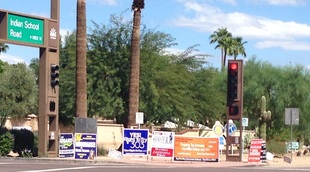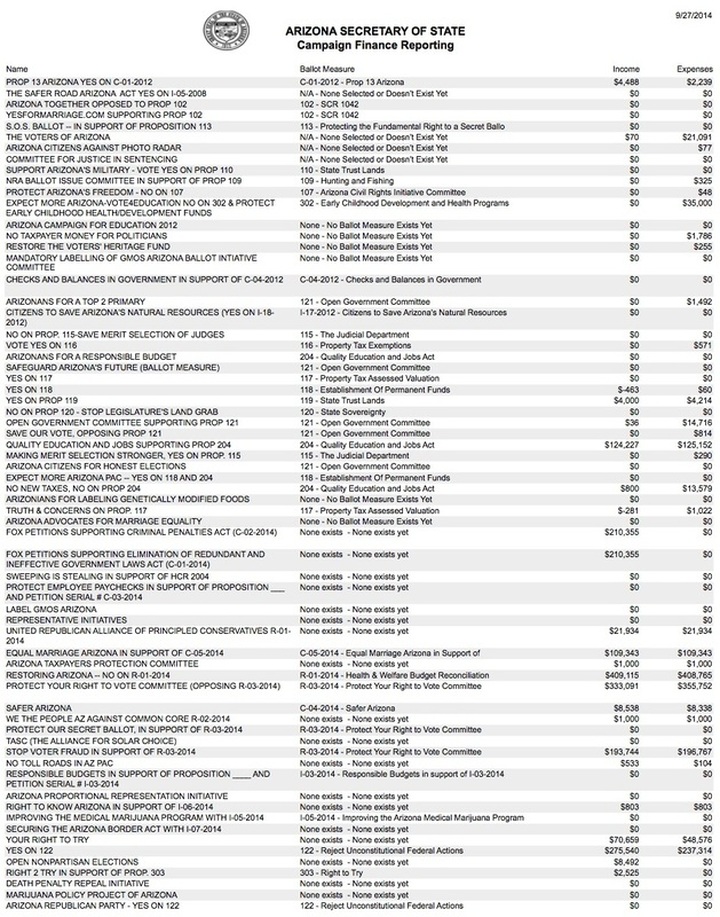 Former Goodyear Connects Former Goodyear Connects A friend recently asked me for information about the Goodyear 2025 General Plan. Voters have the final say about the plan as it's on the ballot for the November 4, 2014 election. I'm all for it. Here's why. Planning for the "plan" started quite a while ago, (I remember several meetings about the General Plan while I was in office 2 years ago). City employees mapped out a very thoughtful and detailed approach to launching a committee and community meetings. Hundreds of residents had input on the plan. For those who couldn't attend meetings - they could voice their opinions online at Goodyear Connects. The city made it difficult for residents to NOT know about it... A general plan is required by law in Arizona. Sure! You can call it a "wish list." A general plan is basically a roadmap or blueprint to guide future growth. Goodyear's plan is ambitious and solid. It's clear a lot of time, thought, and energy went into developing this plan. Those who develop general plans, volunteer residents and city leaders, strive for an achievable and healthy vision for making a city more desirable for residents, businesses, and visitors. Here’s the catch to a general plan: Lawmakers. Exactly how do they plan to make a fancy plan - on paper - come to life? They use our tax dollars. I make no apologies for being quite conservative. I believe Goodyear needs to find a way to eliminate the food tax without jeopardizing pay for police and fire, the services they provide, and all the necessities that come with a clean and safe community. The biggest concern about implementing a general plan is having people in office and leadership roles who will abide by the plan, and do so with fiscally conservative funding decisions. It may be that the entire “wish list” doesn’t happen - or doesn’t happen quickly. But, it’s a plan that has a lot of backing by residents in the hopes of a positive future. If you don’t get bored by city planning, (I find it quite fascinating), I highly recommend going to the next Goodyear council retreat November 7th & 8th at the Justice Center. You'll get an idea how the council and city planners go about following the current General Plan and mapping out spending for the upcoming budget season. If history repeats itself, this meeting is not broadcast, (which is a shame because of the importance of what is discussed). Being there in person is usually the only way you'll get to see it. Cheers to a bright future!
Jen's note: Opinions posted here are simply opinions. Please double check the city's website or call before attending the meetings to make sure they have not been rescheduled.  It’s pretty difficult to drive anywhere in the state right now and not notice all the campaign signs. I always wonder what candidates would rather do with the money they spent on signs if they had the opportunity to designate the funds to go somewhere else. Nevertheless, 100’s of committees just filed their campaign finance reports. Campaigns influencing initiatives on the November ballot are required by law to file a post-primary report, among others. So let’s see what’s hot right now. What's generating the most money? The attached photo is today’s filed totals available on the Secretary of State's website. At any time, you can check for updated numbers here.
The document posted here is the latest list - as of September 24, 2014 - of Maricopa County candidates in school board elections.
Click here to see all Bond and Override Elections in Maricopa County. *Listed below are bond and override elections in the western portion of the county only.*
On Tuesday, November 4, 2014, the voters of Buckeye Union High School District No. 201 (“District”) will be asked to authorize the issuance and sale of not to exceed $49,000,000 principal amount of ad valorem tax bonds of the District in the form of class B general obligation bonds and related matters.
On Tuesday, November 4, 2014, the voters of Dysart Unified School District No. 89 (“District”) will have the opportunity to decide the level of expenditures in the District. Arizona law places restrictions on how much a school district may spend in each fiscal year without procuring explicit approval of the District’s voters in an election. Your responsibility will be to indicate whether you believe the District should operate within the existing expenditure limitation or be allowed to continue to exceed the limitation.
On Tuesday, November 4, 2014, the voters of Litchfield Elementary School District No. 79 (“District”) will be asked to authorize the issuance and sale of not to exceed $35,000,000 principal amount of ad valorem tax bonds of the District in the form of class B general obligation bonds and related matters.
On Tuesday, November 4, 2014, the voters of Palo Verde Elementary School District No. 49 (“District”) will have the opportunity to decide the level of expenditures in the District. Arizona law places restrictions on how much a school district may spend in each fiscal year without procuring explicit approval of the District’s voters in an election. Your responsibility will be to indicate whether you believe the District should operate within the existing expenditure limitation or be allowed to continue to exceed the limitation.
On Tuesday, November 4, 2014, the voters of Saddle Mountain Unified School District No. 90 (“District”) will have the opportunity to decide the level of expenditures in the District. Arizona law places restrictions on how much a school district may spend in each fiscal year without procuring explicit approval of the District’s voters in an election. Your responsibility will be to indicate whether you believe the District should operate within the existing expenditure limitation or be allowed to continue to exceed the limitation.
Please share your thoughts about bonds and overrides on our Facebook page. |
Archives
January 2019
Categories
All
|
||||||||||||||||||||||||||||||||||||||||







 RSS Feed
RSS Feed